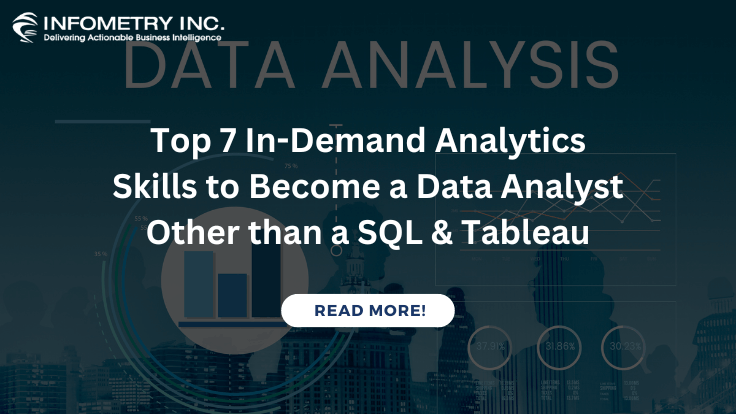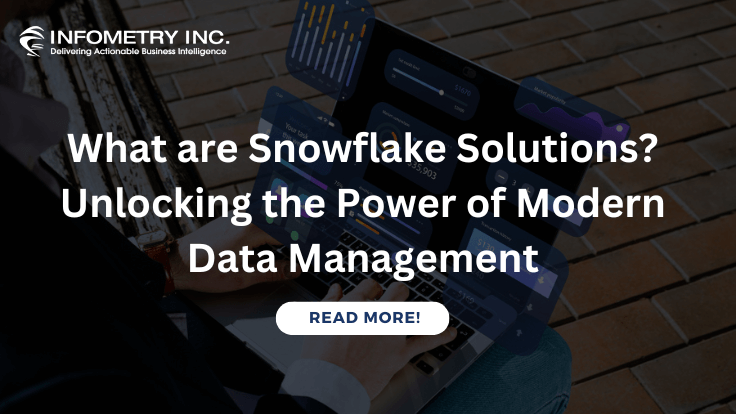
The Ultimate Guide to Sales & Marketing Analytics 2023 Trends
April 6, 2023
Top 7 In-Demand Analytics Skills to Become a Data Analyst Other than a SQL & Tableau
April 8, 2023As businesses continue to invest in advanced analytics, CFOs and FP&A leaders have a unique opportunity to deliver precise forecasts and actionable insights that support timely and informed decision-making. However, the presence of dispersed organizational data and outdated, non-standardized reporting processes can limit the ability of financial planning and analysis teams to provide clear, decision-ready insights required to drive growth. Moreover, our analysis reveals that a mere 3% of companies have fully integrated and aligned strategic, operational, and financial planning processes, underscoring the need for a more cohesive and streamlined approach to financial planning and analysis.
How do we Address Your Top Financial Planning & Analysis Challenges?
FP&A leaders are under immense pressure in today’s decentralized organizational structures to provide precise forecasts, top-quality decision support, and actionable insights, often with limited resources. At such times, our dependable research, expert guidance, and comprehensive benchmarks can prove invaluable to CFOs and their corporate finance teams. By leveraging our expertise, financial planning and analysis capabilities can be transformed, enabling businesses to make strategic decisions that drive growth and success. However, in general, businesses face several financial planning and analysis challenges.
Here Are a Few Tips to Address Some of These Challenges
Lack of accurate data: One of the main challenges in financial planning and analysis is the lack of precise data. To overcome this challenge, businesses can use data analytics tools to collect, organize, and analyze data.
Time-consuming manual processes
Manual processes can be time-consuming and prone to errors. Businesses can automate financial planning and analysis processes using software tools to address this challenge.
Ineffective forecasting
Forecasting accuracy is crucial in financial planning and analysis. To improve forecasting, businesses should use historical data and trends, incorporate external factors like market trends, and use predictive analytics to improve accuracy.
Poor communication
Clear communication is crucial to effective financial planning and analysis. To improve communication, businesses should ensure that stakeholders are informed and aligned on financial goals, performance metrics, and reporting requirements.
Lack of expertise
Financial planning and analysis require specialized knowledge and expertise. To address this challenge, businesses can hire qualified professionals or provide training to upskill existing employees.
By addressing these challenges, businesses can improve their financial planning and analysis processes’ accuracy, efficiency, and effectiveness, which is critical to achieving their financial goals.
How Are Financial Analytics Used in Organizations?
Financial analytics are designed to be used by financial professionals and senior management to enhance the decision-making process within businesses. These tools enable organizations to establish objectives and goals, manage spending and budgeting, create dynamic profit and loss statements, and make accurate forecasts. Financial analytics can improve company-wide performance and drive success by providing a single source of valuable information for decision-makers.
Analytics can be categorized into several tasks: financial modelling, financial reporting, predictive modelling, and descriptive modelling.
Financial modelling involves developing models demonstrating accounting performance for all relevant economic factors, growth, and risk assumptions. Additionally, monitoring tools are available to track ongoing performance and cost against revenues.
Financial reporting involves presenting an organization’s financial situation and includes critical sections such as income statements, balance sheets, cash flow statements, valuations, sensitivity analysis, and significant assumptions.
Predictive modelling relies on techniques such as artificial intelligence, machine learning, data mining, modelling, and statistics to predict future performance based on historical financial data.
Finally, descriptive modelling involves applying mathematical models to describe historical performance, identify business relationships, and suggest contributing factors to these outcomes.
Why do Organizations Needs Financial Analytics?
Financial analytics refers to collecting, analyzing, and interpreting financial data to gain insights into an organization’s financial performance and make informed decisions. Financial analytics is essential for organizations for several reasons, including:
Measuring financial performance
Financial analytics helps organizations measure their financial performance by tracking key financial metrics such as revenue, expenses, profit margins, and cash flow. This information is critical to understanding the organization’s financial health and making informed decisions.
Identifying trends
Financial analytics allows organizations to identify trends in their financial data over time, such as revenue growth or expense increases. Organizations can make informed decisions about their future financial plans and strategies by identifying these trends.
Forecasting future performance
Financial analytics can predict future financial performance depending on historical data and trends. This information is crucial to developing financial plans and budgets aligned with the organization’s strategic goals.
Identifying cost-saving opportunities
Financial analytics can help organizations identify cost-saving opportunities by analyzing expenses and finding areas where costs can be eliminated or reduced.
Assessing investment opportunities
Financial analytics can also be used to determine investment opportunities by analyzing the potential return on investment and evaluating the risk associated with the investment.
What Makes INFOFISCUS Finance Analytics Essential to Your Organization?
INFOFISCUS is a pre-built Finance Analytics software that operates entirely on the cloud. Developed with open architecture, INFOFISCUS employs advanced technologies such as Informatica (or Matillion) to extract data, which is then stored in the Data Cloud Platform, Snowflake. The software also uses industry-standard visualization tools, including Tableau Online, Looker, and Power BI, to provide insightful financial analysis.
It offers extensive support for various analytics and reports, including but not limited to CapEx, OpEx, Balance Sheet, Profit & Loss, Profitability, Fixed Assets, Cash flow, Gross Margin, and Revenue. Additionally, the software provides support for analytics related to Accounts Payable (AP) and Accounts Receivable (AR) and detailed GL reports.
Top Features of INFOFISCUS Finance Analytics
- The software comes with a pre-built Finance data Mart and Analytics that can be integrated with ERP and CRM systems.
- It includes pre-assembled dashboards and scorecards for quick and easy access to critical information.
- Supports Bring Your License (BYOL) model, allowing users to leverage existing licenses and minimize costs.
- The software can integrate with any On-prem/Cloud Apps, ensuring flexibility and compatibility with various systems.
- Offers a rich library of pre-characterized KPIs and layouts, including but not limited to CapEx, OpEx, GL, AR, AP, and Cash conversion cycle.
- Enables analysis of critical financial metrics such as Revenue, Profitability, Cash flow, Expenses, AR, AP, etc.
Conclusion
Financial Analytics is a vital tool that small and large business owners should utilize to manage and measure their business’s progress. The technology enables businesses to adapt to operational trends, providing more reliable and timely financial reports, which is the primary factor in measuring a company’s success from the perspectives of bankers, investors, and analysts. Therefore, by implementing financial analytics, businesses can gain valuable insights into their financial performance, make informed decisions, and improve their overall success.




